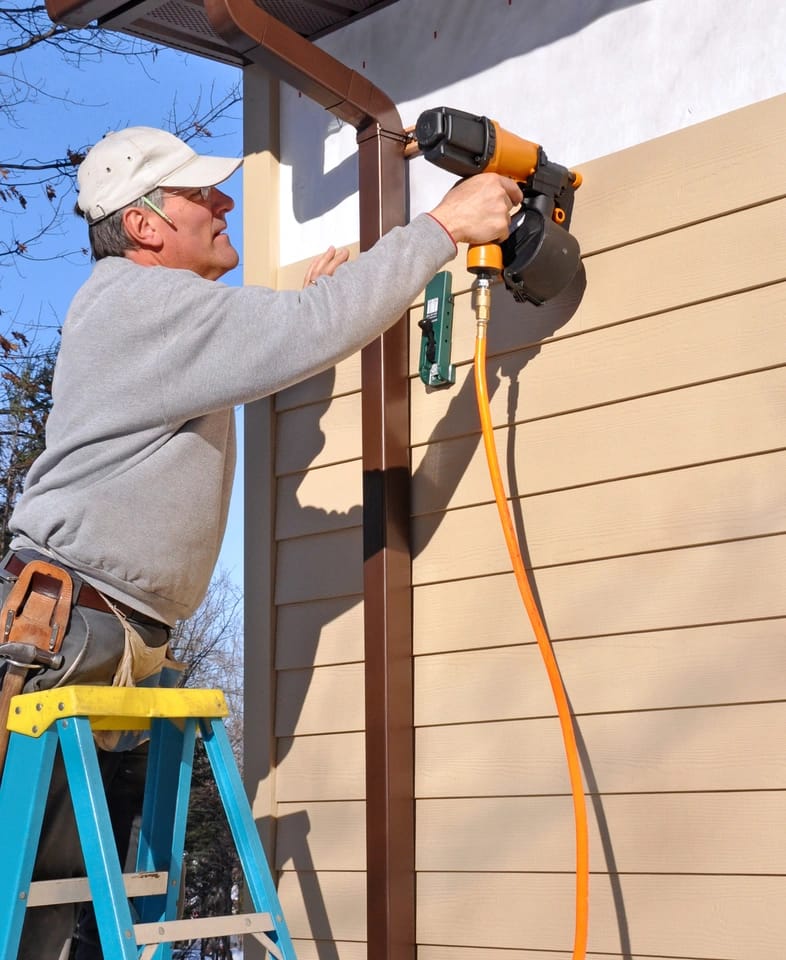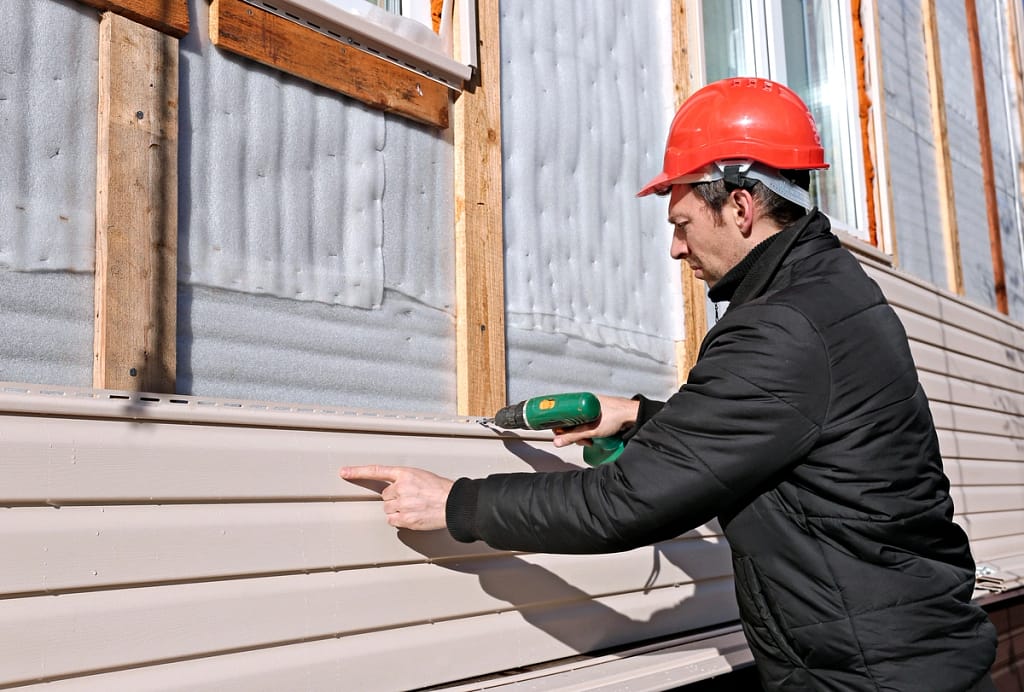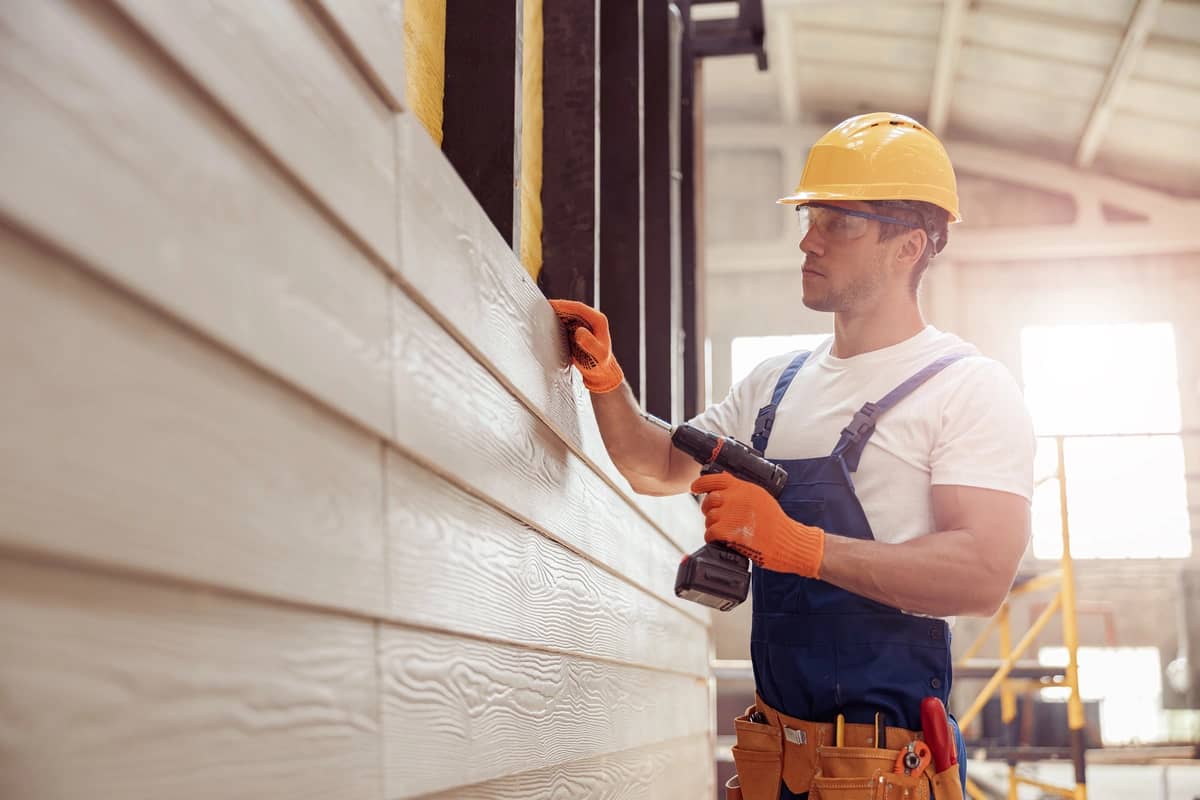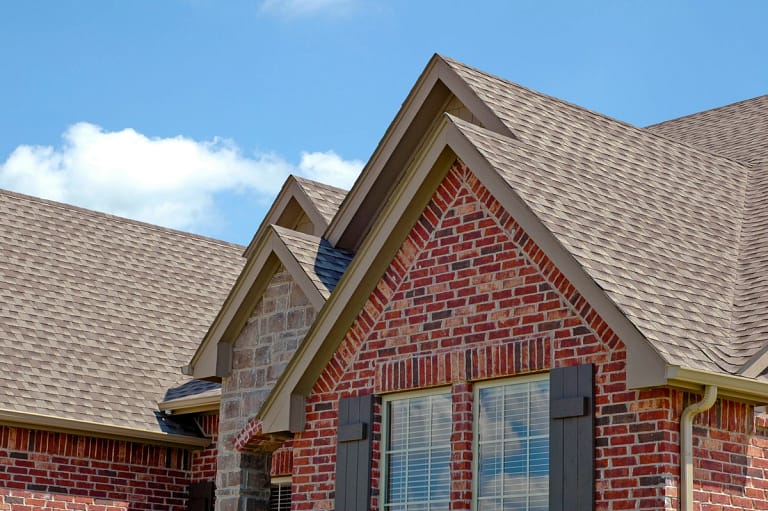Vinyl siding is a popular choice for homeowners looking to improve the appearance and durability of their homes. It offers numerous benefits, but like any home improvement project, it requires the right tools to ensure a successful and efficient installation or repair.
In this blog post, we’ll take a deep dive into the world of vinyl siding, discussing:
- Its pros and cons
- DIY vs. professional repairs
- The must-have vinyl siding tools for any enthusiast or homeowner
We’ll also touch on when it’s best to leave vinyl siding work to the professionals.

Pros and Cons of Vinyl Siding
Before diving into the essential tools for vinyl siding, let’s explore the advantages and disadvantages of this versatile material.
✅ Pros of Vinyl Siding:
- Low Maintenance: Vinyl siding is known for its minimal maintenance requirements. It doesn’t need painting, staining, or regular sealing like wood siding.
- Durability: Vinyl siding is resistant to many environmental elements, including moisture, rot, and insects. It typically has a long lifespan, often exceeding 20 years.
- Variety of Colors and Styles: Vinyl siding comes in a wide range of colors and styles, allowing homeowners to customize their homes to their liking.
- Cost-Effective: Vinyl siding is generally more affordable than other siding materials, making it an excellent option for budget-conscious homeowners.
- Energy Efficiency: Some vinyl siding products are designed with insulation to improve energy efficiency, reducing heating and cooling costs.
❌ Cons of Vinyl Siding:
- Vulnerable to Impact: While vinyl siding is durable, it can be damaged by severe impact, such as hail or a strong impact from a fallen object.
- Limited Repair Options: When damaged, vinyl siding is not as easily repaired as some other siding materials. In some cases, it may require replacing entire sections.
- Fading: Over time, vinyl siding can fade or discolor due to exposure to sunlight and weather.
- Not Eco-Friendly: Vinyl is a petroleum-based product, which may not be environmentally friendly compared to some alternative siding materials.
DIY vs. Professional Repairs
Now that we’ve examined the pros and cons of vinyl siding, let’s discuss whether you should tackle repairs and installations yourself or hire professionals.
DIY Repairs and Installations:
- Cost Savings: DIY projects can save you money on labor costs.
- Personal Satisfaction: Completing a vinyl siding project yourself can be rewarding and give you a sense of accomplishment.
- Flexibility: You can work on your own schedule and take your time with the project.
- Learning Opportunity: DIY projects provide an opportunity to learn new skills and gain experience.
However, it’s essential to consider the following factors before taking on a DIY vinyl siding project:
- Skill Level: Do you have the necessary skills and experience to complete the project successfully?
- Safety: Vinyl siding installation and repair can involve working at heights and handling tools. Ensure you have the right safety equipment and knowledge.
- Time and Effort: DIY projects can be time-consuming and physically demanding. Assess whether you have the time and energy to commit to the project.
Professional Repairs and Installations:
- Expertise: Professionals have experience and expertise in vinyl siding installation and repairs, ensuring a high-quality result.
- Warranty: Many professionals offer warranties on their work, providing peace of mind in case issues arise later.
- Time Savings: Professionals can complete projects more quickly than DIYers, minimizing disruptions to your daily life.
- Safety: Professional installers are trained to work safely and efficiently, reducing the risk of accidents.
However, hiring professionals also comes with some drawbacks:
- Cost: Professional labor can be expensive, and it may increase the overall project cost significantly.
- Limited Control: You may have less control over the project when hiring professionals.
- Scheduling: Professionals may have scheduling constraints that could delay your project.
The 12 Best Vinyl Siding Tools to Have on Hand
If you decide to tackle a vinyl siding project on your own, you’ll need the right tools to ensure a smooth and efficient process. Here’s a list of must-have vinyl siding tools:
1) Vinyl Siding Shears:
These specialized scissors are designed for cutting vinyl siding cleanly and precisely.
2) Vinyl Siding Snips:
Snips are used for cutting curves and intricate shapes in vinyl siding.
3) Snap Lock Punch:
This tool is essential for creating tabs and locking seams together securely.
4) J-Channel Cutter:
A J-channel cutter is used to cut the J-channel trim, which holds the siding in place around windows and doors.
5) Siding Removal Tool:
This tool helps you remove existing siding without damaging it, making it easier to replace or repair.
6) Vinyl Siding Nailer:
If you need to replace damaged sections, a siding nailer can quickly secure the new pieces in place.
7) Level:
Ensure your siding is installed straight and level with a good quality level.
8) Caulk Gun:
A caulking gun is essential for sealing gaps and joints in your siding to prevent water infiltration.
9) Siding Hooks or Hangers:
These can help you hang decorations or outdoor equipment without damaging your siding.
10) Ladder:
Choose a sturdy ladder with adjustable legs to work safely at different heights.
11) Safety Equipment:
Safety goggles, gloves, ear protection, and a dust mask are essential to protect yourself while working with vinyl siding.
12) Scaffolding:
For larger projects or when working on multi-story homes, scaffolding may be necessary to reach high areas safely.
When to Leave It to the Professionals

While DIY projects can be rewarding and cost-effective, there are situations where it’s best to leave vinyl siding work to the professionals:
- Complex Repairs: If the damage to your vinyl siding is extensive or requires extensive structural repairs, hiring a professional is advisable.
- Lack of Experience: If you have little to no experience working with vinyl siding or using the necessary tools, the risk of costly mistakes is high.
- Time Constraints: Professionals can complete the job more efficiently if you have a tight schedule or limited availability.
- Warranty and Insurance: Professionals typically offer warranties on their work and may have insurance coverage, providing added protection in case of issues.
- Safety Concerns: If your project involves working at significant heights or poses safety risks, hiring experienced professionals is best.
Get Help Installing Vinyl Siding
Vinyl siding can be an excellent choice for homeowners looking for an affordable, low-maintenance, and versatile siding option. Whether you decide to tackle a vinyl siding project yourself or hire professionals, having the right tools and a clear understanding of the pros and cons will help you make an informed decision. Keep in mind that safety should always be a priority, and when in doubt, seeking professional assistance is a wise choice to ensure a successful and long-lasting result for your home’s exterior.
Don’t want to invest in the tools on your own? Hiring a roofing professional might be your best bet! Contact Best Exteriors today to learn about our vinyl siding services.




